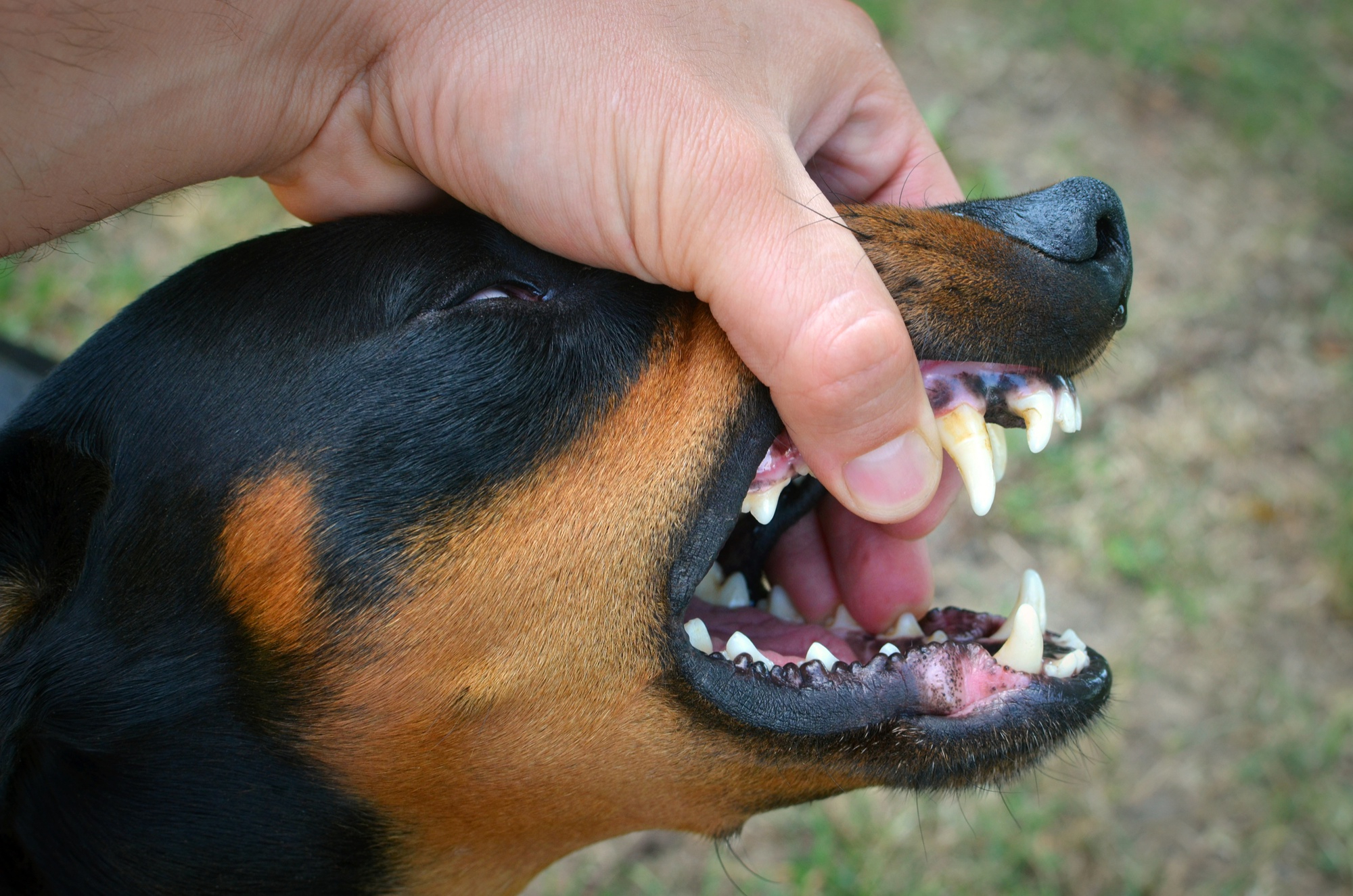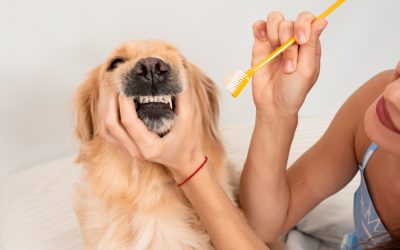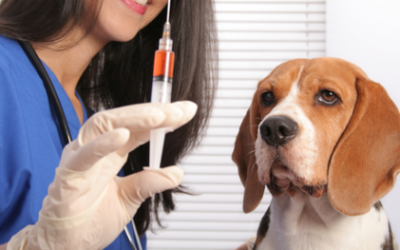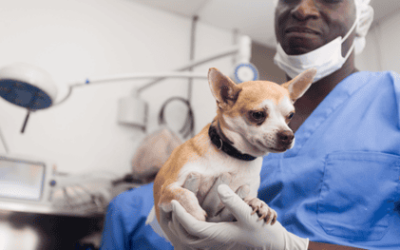Prevent Rotten Teeth and Pain in Dogs

Just like in humans, dental health is a big deal for our dogs! Their teeth are essential for chewing, eating, and overall well-being. If dental hygiene is neglected, problems like rotten teeth can arise, leading to pain and discomfort that can seriously affect their quality of life.
What Are Rotten Teeth in Dogs?
Rotten teeth, or tooth decay, happen when bacteria in the mouth produce acids that wear away at tooth enamel and dentin. This can cause cavities, infections, and even tooth loss. For dogs, rotten teeth aren’t just uncomfortable—they can make eating or drinking difficult, sometimes leading to malnutrition or dehydration.
Let’s explore what to look out for, what causes rotten teeth, and how you can help your dog maintain a sparkling smile.
Spotting the Signs of Rotten Teeth
Your dog can’t tell you when something’s wrong with their teeth, so it’s up to us to notice the signs. Here are some red flags:
- Bad breath: Persistent, foul-smelling breath (not the usual “doggy breath”) is often the first sign of dental trouble.
- Discolored teeth: Teeth that look yellow, brown, or have dark spots might mean there’s plaque, tartar, or decay.
- Difficulty eating: If your dog is avoiding food or chewing differently, it could be because their teeth hurt.
- Drooling more than usual: Excessive drooling might indicate discomfort or pain in the mouth.
- Swollen gums: Red, puffy, or bleeding gums could be a sign of gum disease or infection.
- Pawing at the mouth: If your dog is scratching or rubbing their face, they may be trying to soothe mouth pain.
What Causes Rotten Teeth?
Understanding the causes of tooth decay can help you take steps to prevent it. Here are the usual suspects:
- Poor oral hygiene: Skipping regular brushing allows plaque and tartar to build up, leading to decay.
- Diet: Treats high in sugar or starch feed bacteria that cause decay, while poor nutrition can weaken teeth.
- Age: Dental problems tend to increase as dogs get older.
- Breed: Certain breeds, like small or short-nosed dogs, are more prone to dental issues because of crowded teeth.
- Injury: Damaged teeth or gums can make it easier for bacteria to thrive.
- Health conditions: Diseases like diabetes can make dogs more susceptible to dental issues.
How Can You Prevent Rotten Dog Teeth?
As Stephanie Gibeault, MSc, CPDT described in the American Kennel Club: “Dr. Soltero-Rivera says the best way to prevent tooth decay in dogs is to make sure they don’t have access to sugary foods and treats. And of course, brush your dog’s teeth daily to keep plaque at bay and help prevent cavities. Look for a dog-friendly toothpaste and use a toothbrush or finger brush that is an appropriate size for your dog’s mouth. Then, make the process positive by starting with gentle touches and pairing each touch with a treat before building up to full-on brushing. There are also plenty of products recommended by the Veterinary Oral Health Council, such as chew treats or dental diets, that can help contribute to keeping your dog’s teeth clean and healthy.”
Visiting your vet at least once a year for a checkup can help determine if your dog needs a professional dental cleaning.
As Dr. Soltero-Rivera explains, these cleanings reach areas that even the most diligent toothbrushing can miss. While it might be tempting to have your groomer scale your dog’s teeth or try doing it yourself, this isn’t enough to maintain proper oral health.
Veterinary dental cleanings are done under anesthesia, allowing your vet to clean beneath the gum line, check for hidden issues, and take x-rays to assess the health of the teeth below the surface. This thorough process is the only way to get a complete picture of your dog’s dental health—and ensure they get the treatment they may need.
If your vet recommends specialized care, there are also board-certified veterinary dentists available across the country to help keep your dog’s smile in top shape.
Creating a Dog-Friendly Dental Routine
A good dental routine is the foundation of healthy teeth. Here’s a step-by-step guide:
- Brushing: Start slow, and make it a positive experience with rewards. Use pet-safe products only.
- Chews and toys: Give your dog options that are both fun and good for their teeth.
- Water additives: These can help reduce plaque and tartar buildup—just follow the instructions.
- Vet visits: Regular dental check-ups catch problems early and keep your dog’s teeth in top shape.
How Can Pet Insurance Help You if Your Dog Needs Treatment?
Pet insurance can be a valuable tool in managing the costs of treating a dog’s veterinary expenses. By having a pet insurance policy in place, you can have peace of mind knowing that you can provide medical care for your furry companion without worrying about the financial burden. Pet insurance can help cover the costs of veterinary consultations, diagnostic tests, medications, and even specialized treatments if required.
Reimbursement
This method is the most common for pet insurance companies. You pay out of pocket for the veterinarian bill, and then the insurance company reimburses you for what’s covered under the insurance plan. The steps look like this.
- You pay the vet bill after your dog’s visit.
- You fill out the pet insurance claim form.
- Submit the claim form and other required documentation to the insurer.
- After the claim is approved, you will be reimbursed for eligible expenses.
Odie’s Illness and Injury pet health insurance plan offers comprehensive coverage for your dog.
What Does Odie Pet Insurance Cover?
Pet insurance covers various veterinary expenses, providing financial protection and peace of mind for pet owners. Here are the details of the coverage options offered by Odie Pet Insurance:
Illness & Injury Plan
The Illness & Injury Plan is an all-inclusive insurance plan designed to cover a wide range of medical needs for your pet. This plan includes comprehensive coverage for various illnesses, injuries, and veterinary services. Some of the covered items include:
- Veterinary exams and consultations
- Diagnostics (e.g., X-rays, lab tests)
- Prescribed medications
- Surgeries and hospitalization
- Rehabilitation, acupuncture, or chiropractic treatments
- Medically necessary supplies
- Euthanasia and cremation
The Wellness Plan
The Wellness Plan is a monthly membership that focuses on preventive care and covers routine veterinary services.
- Provides reimbursements for routine care items such as wellness visits (exams and vaccines), testing and parasite prevention, dental cleanings and at-home dental care, vitamins, supplements, and more.
- Through Odie’s partnership with Petivity, a leader in smart pet products and proactive care, Wellness Plan members can also receive reimbursements for Petivity devices and health kits, as well as eligible Purina food and supplements.
- Total reimbursement up to $700 per year.



